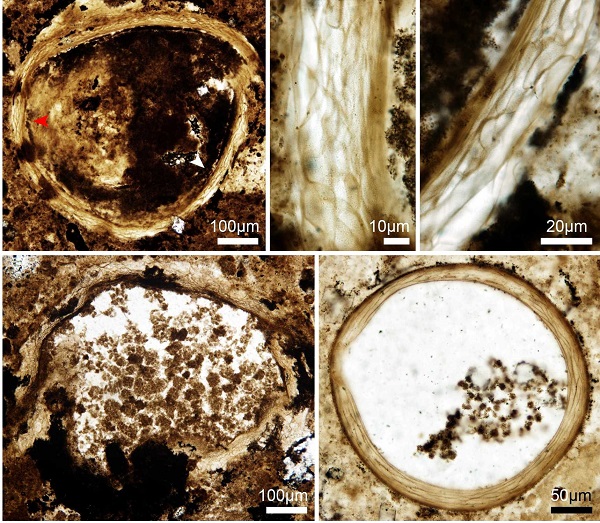
Eukaryotic life began to thrive and diversify globally in the Ediacaran Period. This event initiated from the wide occurrence and diversification of the Ediacaran acanthomorphic acritarchs and multicellular algae.
Previous studies showed that the eukaryotic radiation continued from the Ediacaran Period to the Cambrian explosion. However, when and how the earliest Ediacaran acanthomorphs occurred and diversified remain unclear.
Researchers from the Nanjing Institute of Geology and Palaeontology of the Chinese Academy of Sciences(NIGPAS) and their collaborators from the Virginia Tech. identified new acanthomorphic acritarchs from the lower Doushantuo Formation in South China.
Their study, published in Precambrian Research on Nov. 24, shed light on the evolution of acanthomorphs.
Based on 1,547 acanthomorphic acritarch specimens from the Doushantuo Formation at three sections, the researchers identified 24 genera and 69 species, including two new genera, six new species, five unnamed species, and three possible new forms tentatively placed in open nomenclatures.
The high-resolution fossil occurrence and abundance data from the three sections reveal both spatial variations in acritarch composition, and stratigraphic similarities in acanthomorph range and abundance.
The researchers found that acanthomorphs from the lowest chert nodule horizon of the Doushantuo Formation were considerably high diversity, indicating a possible earlier appearance of these eukaryotic organisms.
This finding also demonstrated that the First Appearance Data (FAD) of any acanthomorphic acritarch from this lowest chert nodule horizon in basal Member II may not serve as a good criterion for the base of the Second Ediacaran Stage (SES), thus other geological records were needed in searching for the basal boundary of SES.
In the upsection, altogether 21 species occurred within the 20 m strata above the cap dolostone, exceeding half of the total number of species (65.6%) from Member II of the Doushantuo Formation at Jiulongwan.
Based on published cyclostratigraphic data, these results showed that Ediacaran acanthomorphs diversified rapidly, reaching a considerably high diversity within about 10 Myrs after the end of Marinoan glaciation.
This study was supported by the National Key R & D Program of China, National Natural Science Foundation of China, the Strategic Priority Research Program (B) of Chinese Academy of Sciences, and the U. S. National Science Foundation.

Newly erected genus and species Crassimembrana crispans gen. et sp. nov. and a new form Crassimembrana cf. C. crispans (Image by NIGPAS)

86-10-68597521 (day)
86-10-68597289 (night)

52 Sanlihe Rd., Xicheng District,
Beijing, China (100864)

